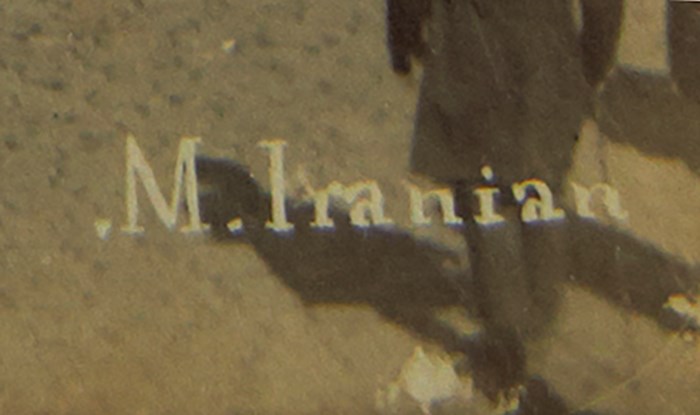
Mihran Iranian
1890 - 1890s
Details regarding Mihran Iranian’s life and career are scant. It is known that he established his studio in 1891 in Pera district of Constantinople – the center of Armenian cultural and political life. In 1895 he enters into partnership with another photographer by the name of Gugasyan. By the 1900s the business seems to have wound down. Of all the major Armenian studios from Istanbul, Iranian’s albumen photographs are the rarest and less than 300 images are known to have survived.
Iranian’s primary subject was the city of Constantinople, its picturesque landscape, architectural heritage and the many types of artisans and workers that populated its streets. Evidently using a light camera with faster lens, which allowed for mobility and rapid exposures, Iranian captured the bustle of the city streets with remarkable clarity. Teeming with movement, these images often have an immediacy and documentary veracity unlike similar views produced by other Istanbul photographers from the previous decade.
The typical approach for many of Iranian’s contemporaries such as Sebah & Joalier or Guillame Berggren was to achieve as clear a picture as possible with perfectly balanced compositions and distinctly visible details – the hallmark of a ‘good’ commercial photographer. In contrast, Iranian’s street views are full of photographic ‘ruptures’ – blurred figures in movement, surprised glances of people caught unawares – which give his works the look of snapshots. But above all, Iranian was a master at capturing the mood of a place. Catching the Ottoman capital on the brink of rapid transformation, the photographer aimed to record many of the ancient streets and quarters before they disappeared. Thus, like the Parisian street photography of Eugene Atget, Iranian’s images are ‘nostalgic for the present’. It is this sense of melancholy that gives Iranian’s photographs their subtle emotional power. This is also perhaps the reason why he was ultimately not successful as a commercial photographer. Modernity had captured the imagination of the people and the wistful romanticism of Iranian’s markedly less spectacular images was fast going out of fashion. The small legacy he has left behind is nevertheless of significance in the history of Near-Eastern photography. He was one of the few Ottoman photographers with an individual and subjective approach, which deserves a proper evaluation.
Nationality
Armenian, Ottoman
Region
Ottoman Empire
City
Constantinople
Studio
M. Iranian
Activity
studio
Media
analogue photography
Bibliography
Oztuncay, Bahattin. The Photographers of Constantinople, vol.1, Aygaz, Istanbul, 2003, p.315
Collections
Getty Museum, Los Angeles; Lusadaran Armenian Photography Foundation, Yerevan






